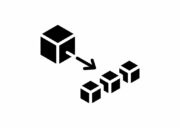
We live in an era of constantly accelerating innovation that is driven by two factors. Firstly, surviving the range of unexpected crises that keep coming our way, such as the pandemic or climate change. Secondly, finding ways to simplify all aspects of daily life. “We are drowning in an ocean of data and the IBM AI technologies provide practical tools to find the insights you need to shine a light on the path of progress”, says Rashik Parmar, Fellow and Vice President Technology EMEA at IBM.
IBM is constantly searching for new technologies, and the new talents needed to exploit them. A great example of IBM’s global efforts is the 2021 IBM Call for Code Global Challenge. The next chance to participate in this transfer of knowledge is the IBM Think EMEA 2021, a multi-layered series of events that share many subjects in common, but also offer material uniquely targeted to certain regional markets. The latter material will be online on October 13th and 14th.
Parmar and empowerment through the Call for Code Global Challenge
An important part of the Think EMEA 2021 event will be the panel discussion around Call for Code, moderated by Rashik Parmar—a very valuable guide to technology integration—and hosting participants such as Bente Acking (The Hero Loop, Regional Winner Europe 2021) and Timo Wielink (Project OWL, Winner 2018).
Talent discovery is an important part of business today. “To discover them, we at IBM use a wide range of paths from Social Media through to competitions like Call for Code”, says Parmar. “It is most important for us to discover the people that align with our values and demonstrate the expertise we need”.
Call for Code is an important part of that process. “Everyone likes to feel they are contributing to addressing the societal issues they experience and care about. Call for Code is a unique opportunity to collaborate with people that share a similar passion and have complementary expertise, to make a difference. Most importantly, Call for Code provides a platform for you to turn your idea into reality and change peoples lives”.
The relevance of containers
A large part of the digital transformation around the incredible data production we are experiencing is based on the automation of repetitive tasks in a multi-cloud environment. Red Hat OpenShift is a core technology in this field, and is also at the disposal of all teams participating in Call for Code.
To better understand why OpenShift is so important, let’s start from the beginning: the (software) container. A container is a standard unit of software that packages code and all its dependencies so that the application runs quickly and reliably from one computing environment to another. Backed by containers, all the classic ICT work can be done autonomously. Linux is the preferred container operating system.
Managing containers is not an easy task. Here Kubernetes, an open-source platform suitable for managing containers, comes into play.
That brings us to the critical point: OpenShift provides tools that help developers and operations teams run containerized workloads. The system offers automated features such as installation, upgrades, and lifecycle management throughout the container stack. Examples of a container stack include Linux, Docker, and Kubernetes. The magic word is “automation”, the key to the software development of the future.
Why OpenShift?
An ideal multi-cloud solution must be automated, agile, and (ideally) implemented through a homogenous development environment across public and private Cloud platforms. Those features are also intended to enhance productivity and teamwork for both developers and operations engineers.
Exploring the advantages of multi-cloud solutions and how cloud native development with OpenShift addresses many technical challenges involved in multi-cloud deployment is a foundational subject in today’s environments. “Build once and deploy anywhere with OpenShift” was the title of the session led by Mo Haghighi, IBM Hybrid cloud build leader, who will also repeat this session at Think EMEA 2021.
Haghighi will also explore some of the productivity features of OpenShift for developers, as well as cultural practices for DevOps teams with diverse skill sets across multiple Cloud platforms.
Niklas Heidloff, CTO Hybrid Cloud Build Team EMEA, answered some questions to go into deeper detail on OpenShift and hybrid architectures:
Hybrid IT architectures are shaping the digitally-transformed world. Multi-cloud solutions are a strong component. If you were to describe an ideal multi-cloud solution, what would it be like?
My ideal multi-cloud solution would be an application that uses multiple public or private Clouds with unique features, but provides a central management capability to operate everything consistently from a central control plane. IBM provides IBM Cloud Satellite that does exactly that.
Another reason why multi-cloud and hybrid-cloud solutions have become that popular is because the ‘computer’ should be run where the data resides. For legal, security or governance reasons data often must not leave companies’ own data centers.
What features can enhance productivity and teamwork for both developers and operations engineers in a multi-cloud solution?
One key feature is the central manageability capability I just mentioned. Rather than deploying to each Cloud separately and using different observability tools, a consistent and central management helps reduce costs and complexity. For example IBM Cloud Satellite comes with configuration features based on the tool Razee, that we open sourced, which is a multi-cluster continuous delivery tool for Kubernetes.
With services running in different Clouds it also becomes more challenging to do traffic management, observability and security. The open source project Istio is a service mesh technology that helps both developers and operation engineers.
Cloud-native development gives us more agility, resiliency, and scalability. Through the ability to use microservices-based architectures, applications can be broken down into smaller pieces which often allows updating separate pieces independently from each other.
Applications can continue to work even when specific parts are currently not available.
The ability to scale horizontally is one of the huge benefits of the Cloud. Even specific microservices can be scaled independently which save costs and resources.
In bullet points, what are the challenges involved in multi-cloud deployment?
- Too much network and management overhead! Choose wisely when and how to use multi-cloud deployments. Just because you can mix and match all these technologies doesn’t mean you always should.
- More skills needed. While many features are similar on different Clouds, there are differences that developers and operation engineers need to understand.
How can OpenShift help solve technical challenges and improve DevOps?
There are different definitions of DevOps. When I talk about DevOps, I refer to a culture that needs to be established where people with different skills and roles work closely together to develop and also operate applications. With tools alone you will never implement DevOps.
That having been said, OpenShift certainly helps when such a culture exists. OpenShift is Red Hat’s enterprise distribution of Kubernetes. It comes with all Kubernetes’ functionality and adds opinionated features to make usage of Kubernetes more secure. Additionally, support is provided for OpenShift customers.
OpenShift comes with Tekton, which is a Kubernetes-native framework for creating CI/CD systems which can be used as alternatives to other popular options like Jenkins.
The more interesting element that only Tekton offers, however, is the additional usage of ArgoCD in OpenShift. ArgoCD is a tool to implement a GitOps approach where the “to be” state is synchronized with the “as is” statement automatically based on declarations. I predict that over the next few years we’ll see more and more usage of this GitOps model.
How does a higher level of automation help in tackling security issues and DevSecOps attitude?
DevSecOps is certainly another key aspect as part of DevOps. Security must not be an afterthought when developing systems and applications. DevSecOps automatically bakes-in security at every phase of the software development lifecycle, enabling development of secure software at the speed of Agile and DevOps.
IBM provides an opinionated Cloud Native Toolkit which comes with pipeline templates that can easily be used for static analysis, image vulnerability checks, and much more.
What new markets do you expect to see rise in the next few months?
Kubernetes is an incredibly powerful and popular platform. Via the built-in extensibility mechanisms it can be used for scenarios it was not designed for originally. At the same time, Kubernetes is still rather difficult to use for developers. I believe that we will see more tools and standards that make developers more productive again. Some of this you can see in Red Hat OpenShift and IBM’s serverless solution IBM Code Engine.
With more and more Kubernetes platform functionality becoming a commodity, I also predict that industry-specific Cloud platforms will become more important. For example IBM provides IBM Cloud for Financial Services which is a Cloud designed to build trust with the specific features for security, compliance, and resiliency that financial institutions require.
IoT (the Internet of Things) or what is now called edge computing will certainly also see a lot of growth with more and more connected devices and sensors. You should also keep an eye on Quantum Computing which will be a game changer for fields like finance, materials, logistics, and chemistry.
Four self-paced labs
Here are the titles of the four labs available at Think EMEA 2021, and also a link for those who wish to know how the lab works
1 Openshift Basics
An introduction to the environment, “Red Hat OpenShift – Start with the Basics” lab provides learners new to OpenShift and Kubernetes with level-setting core skills.
Key activities include:
- Exploring the OpenShift CLI;
- Services and Routes;
- Deploying from an Image.
2 A RESTful service
Building and deploying a RESTful web service on OpenShift 4.x
3 Microservices with MicroProfile
Creating reactive microservices using MicroProfile Reactive Messaging
4 Java with MicroProfile and Jakarta
Cloud-native Java made easy with MicroProfile and Jakarta EE.
Think EMEA 2021 is just one click away
The European Edition of IBM Think EMEA 2021 will be held online on October 20th and 21st, 2021. Register and reserve your at-home seat for your preferred sessions and labs by clicking here.
It’s easy!




